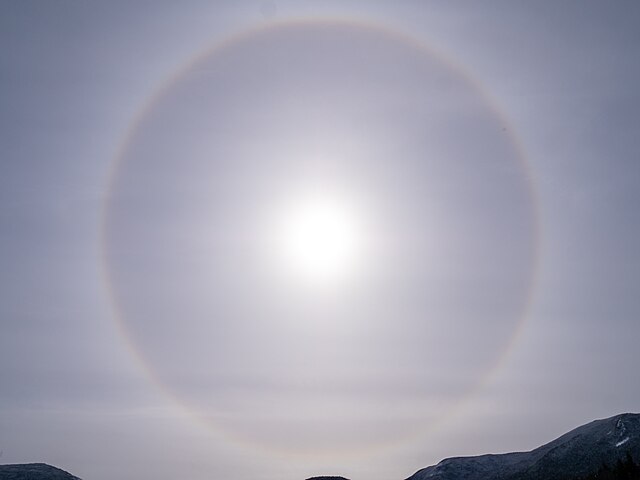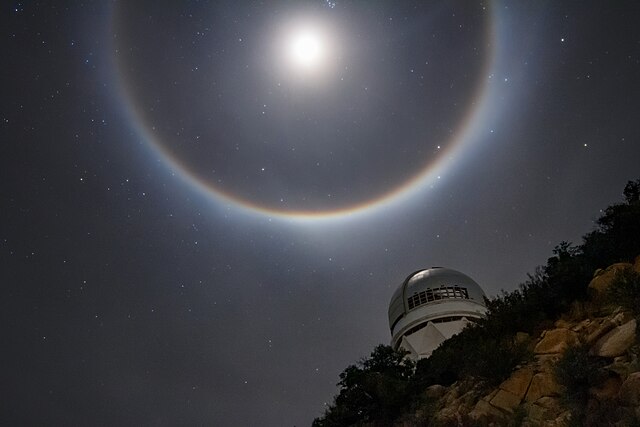A parhelic circle is a type of halo, an optical phenomenon appearing as a horizontal white line on the same altitude as the Sun, or occasionally the Moon. If complete, it stretches all around the sky, but more commonly it only appears in sections. If the halo occurs due to light from the Moon rather than the Sun, it is known as a paraselenic circle.
A crisp parhelic circle (horizontal line) over South Pole Station. Photo: John Bortniak, NOAA, January 1979.
A halo display observed over the South Pole. Featured in the photo are several distinct phenomena: A parhelic circle (horizontal line), a 22° halo (circle) with two sundogs (bright spots), and an upper tangent arc. Photo: Cindy McFee, NOAA, December 1980.
22° sun halo with a complete parhelic circle. Photo is taken with Samsung S10 phone (wide lens) near Zazid, Slovenia, on May 19th, 2023.
A nearly complete paraselenic circle, along with a partial 22° lunar halo and the eastern moon dog. Photo is taken by the all-sky camera of the Piszkéstető Mountain Station, Konkoly Observatory (Hungary), February 2023.
Halo (optical phenomenon)
A halo is an optical phenomenon produced by light interacting with ice crystals suspended in the atmosphere. Halos can have many forms, ranging from colored or white rings to arcs and spots in the sky. Many of these appear near the Sun or Moon, but others occur elsewhere or even in the opposite part of the sky. Among the best known halo types are the circular halo, light pillars, and sun dogs, but many others occur; some are fairly common while others are extremely rare.
A 22° halo around the Sun, observed over Bretton Woods, New Hampshire, USA on February 13, 2021
A 22° halo and circumscribed halo around the Moon, observed near Kitt Peak National Observatory
From top to bottom: A circumzenithal arc, supralateral arc, Parry arc, upper tangent arc, and 22° halo
A halo display observed over the South Pole








